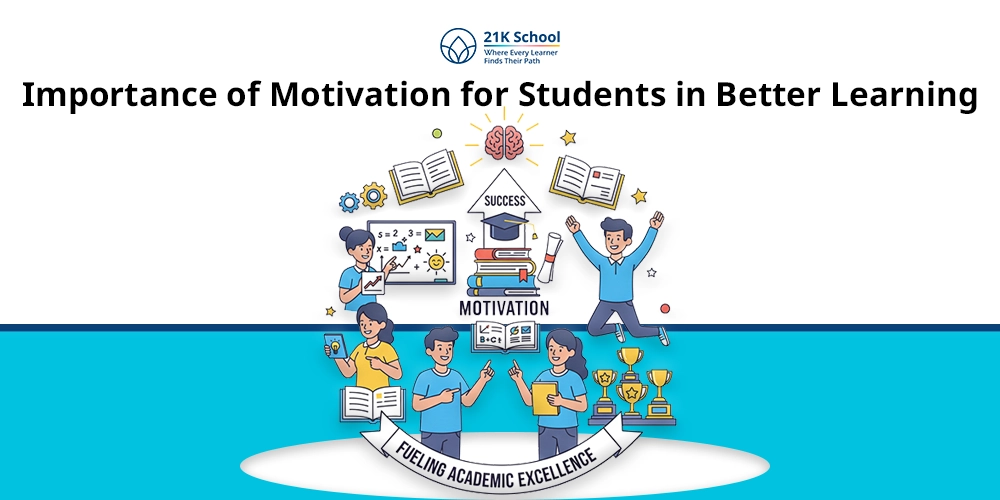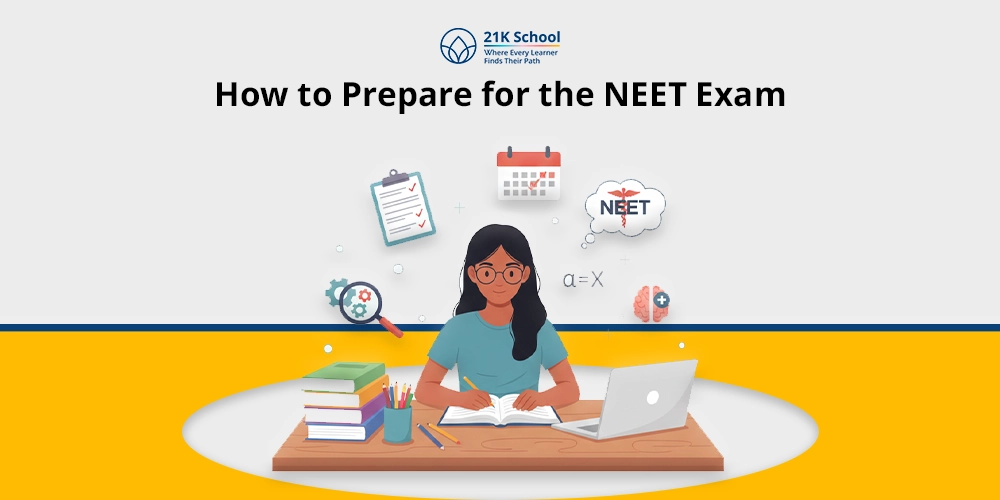
Slow learners find learning difficulties especially when it comes to memorisation or rote learning . But now they can go with engaging options.
Various fun and learning activities can be the best method for slow learners. To explore new concepts, deal with real-life situations that make study quick and effective.
Utilising fun and active activities such as math problems, memory games, painting and drawing projects and physical activities makes them more confident.
These activities are designed for the slow learners which help them overcome inability and enhance their problem-solving skills . Let’s try to understand some of these activities and their best use cases in detail.
Table of Contents
What Are Activities for Slow Learners?
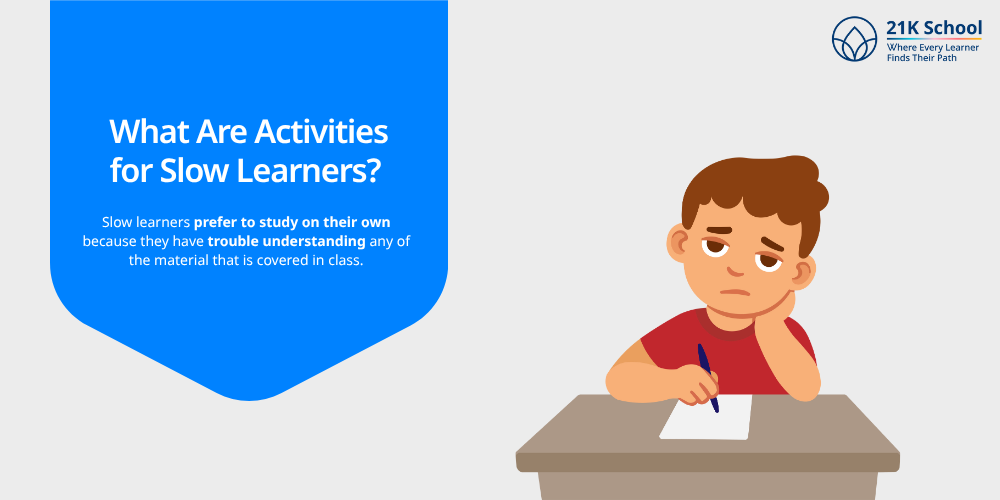
Slow learners prefer to study on their own because they have trouble understanding any of the material that is covered in class. The activities for slow learners performed in class makes students aware of their potential and challenge their inabilities.
When it comes to dedicated research based classification, the definition of slow learners extends to the broad group of learners with different needs. These may have different learning paces, engagement levels, or memory and hence require personalized approaches like differentiated instructions, technology integration, or others.
Teachers, after crossing several limitations forced due to slow learners, come up with activities like remedial teaching action plan for slow learners , peer tuitions, oral discussions, mental exercises, etc. for helping these students in excelling in their future careers.
You will eventually find that these activities are not hard to incorporate and parents can remain less bothered for their children’s learning journey.
Now, we can have a look at the variations of activities for slow learners that help them in causing no problems for their future.
Top 11 Fun Activities for Slow Learners
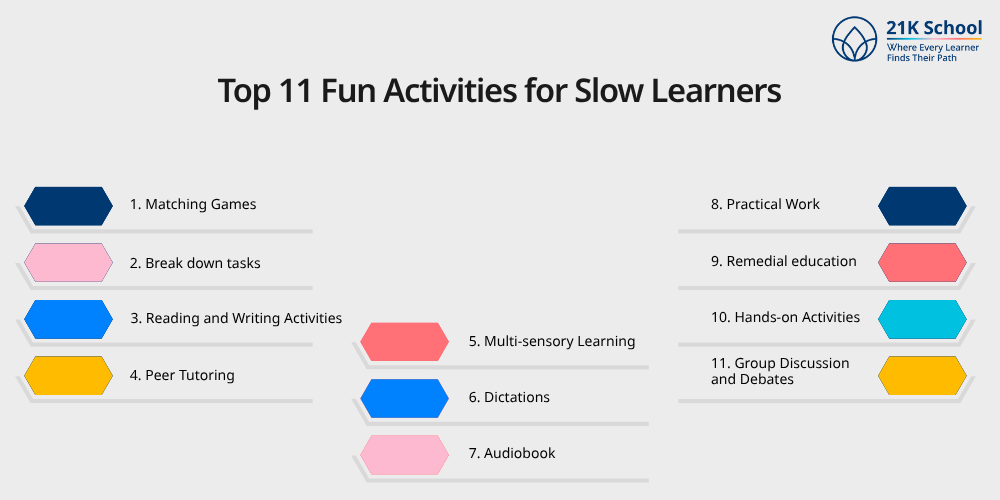
There are some best activities that can encourage learning in slow learners along with creating a healthy collaborative learning environment.
Research shows that if educators are capable of getting the best inner talents out of every student with the help of best strategies, students will feel more welcomed at learning.
Here’s the elaborated version of them:
1. Matching Games
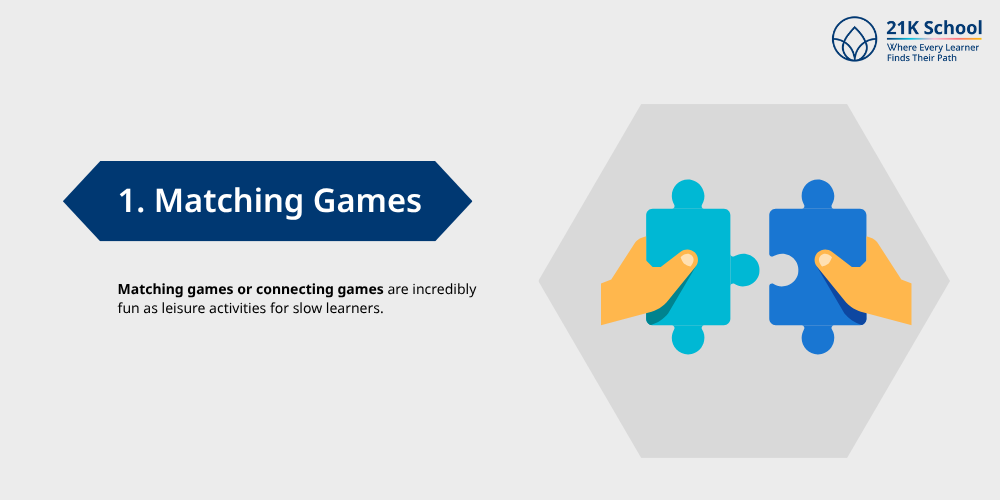
Matching games or connecting games are incredibly fun as leisure activities for slow learners.
It is very likely that slow learners find it nearly difficult to relate two objects with their limited cognitive learning . To assist in this problem, matching figures, numbers, animals, colours, etc. are taught to them from the beginning of their learning experience.
This is a type of activity which is mostly suitable for every subject and type of learner. Performing such activities in the classroom can offer focused content and better retention of them for students learning slowly.
2. Break down tasks
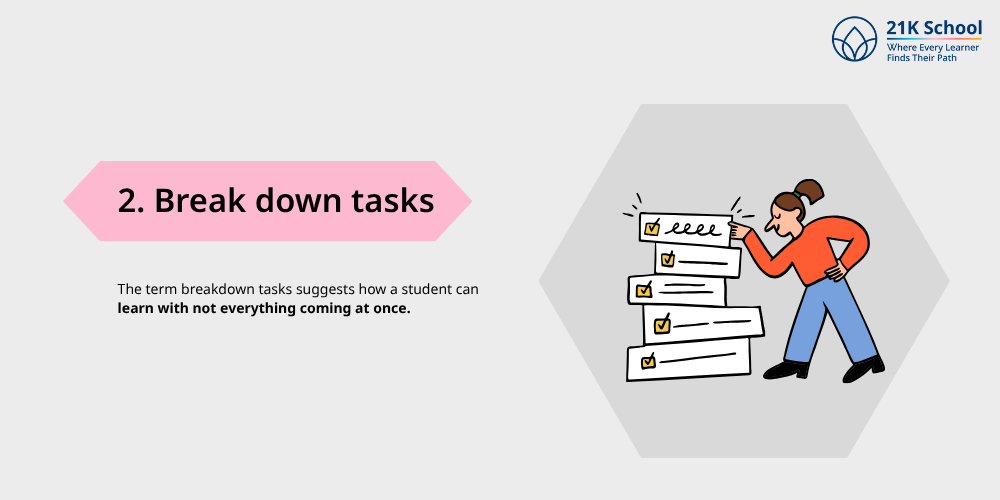
The term breakdown tasks suggests how a student can learn with not everything coming at once. Breaking down tasks is about dividing tasks in small chunks and giving to slow learners to practice and confirm if they are able to learn that much.
Slow learners are often seen confused and underconfident that they won’t be able to reach their highest potential if they don’t learn at everyone’s pace. Here these activities come to save their esteem and learning capabilities.
When they learn little-by-litle and truly practice those parts only, it makes their exam attempts easier as they remember the topics clearly.
Focus on one topic only, rather than multiple topics is the central agenda of this activity.
3. Reading and Writing Activities

Reading and writing activities are considered as one of the best activities to enhance the learning outcome of slow learners.
Developing reading habits and writing proficiency among slow learners improve their vocabulary skills it also helps with the types of reading skills to enhance your comprehension .
To indulge in this activity, students can practice journal writing, article writing, story telling and so on. Developing curiosity and love for learning is generated from this kind of activity.
4. Peer Tutoring
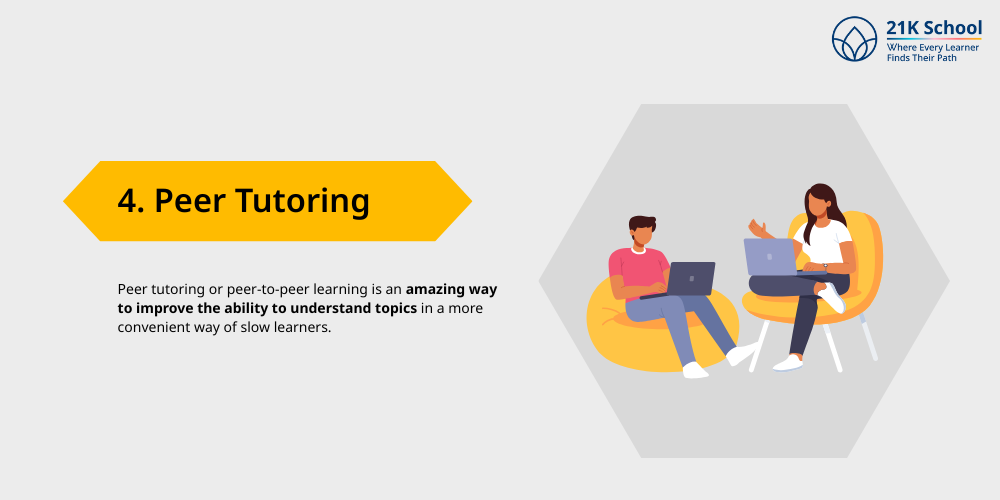
Peer tutoring or peer-to-peer learning is an amazing way to improve the ability to understand topics in a more convenient way of slow learners. In this activity, their friends are involved which gives them the freedom to express and ask doubts without shyness or hesitation or even be dependent on teachers.
This method also promotes personalised learning experiences where slow learners also receive equal opportunity to indulge in the learning process.
Peer-to-peer education allows slow learners to study as per their own comfortability and convenience, allows them to explore their understanding level and develops a deeper understanding of knowledge.
5. Multi-sensory Learning
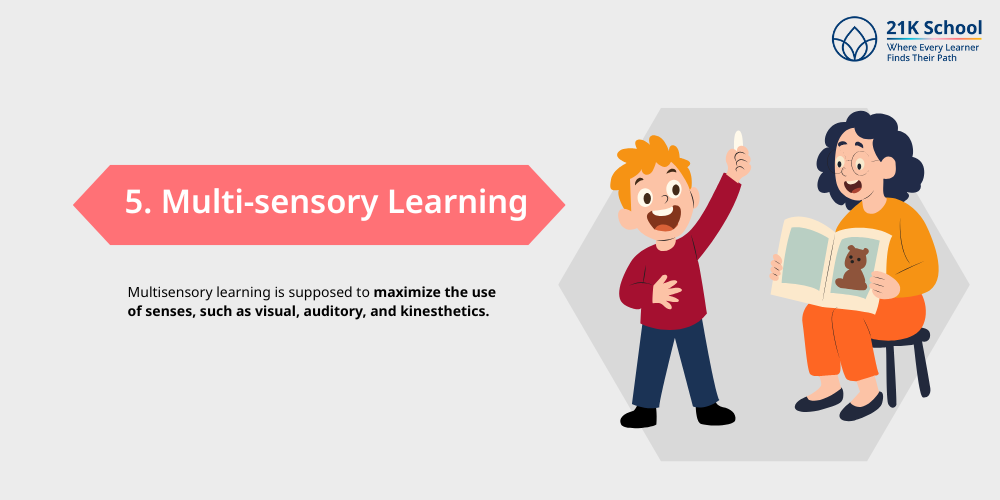
Multisensory learning is supposed to maximize the use of senses, such as visual, auditory, and kinesthetics. Slow learners learn with all multiple senses acting at once and sending desired information to better process it.
Multisensory learning advances students to practice deeper comprehension of visual learnings and their practical retention.
Teachers are often reliable on audio or visual aids for teaching these children with accuracy and comfort.
6. Dictations
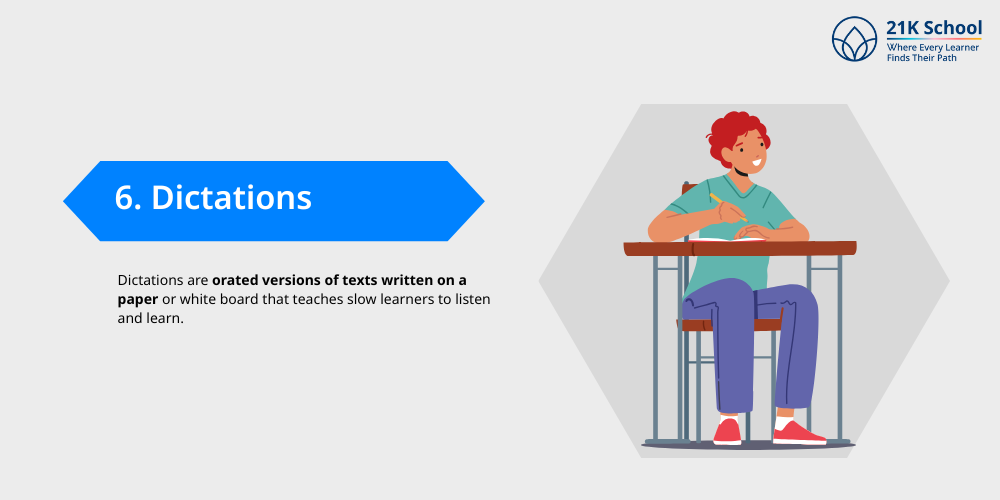
Dictations are orated versions of texts written on a paper or white board that teaches slow learners to listen and learn. For slow learners who learn better with their audible power, it is really helpful.
Dictations are curated for slow learners to teach them reading and writing skills, and also managing spellings in advance.
Teachers invest their energy into dictating theories and stories of student’s learning choice and help them in their exams clearance.
7. Audiobook
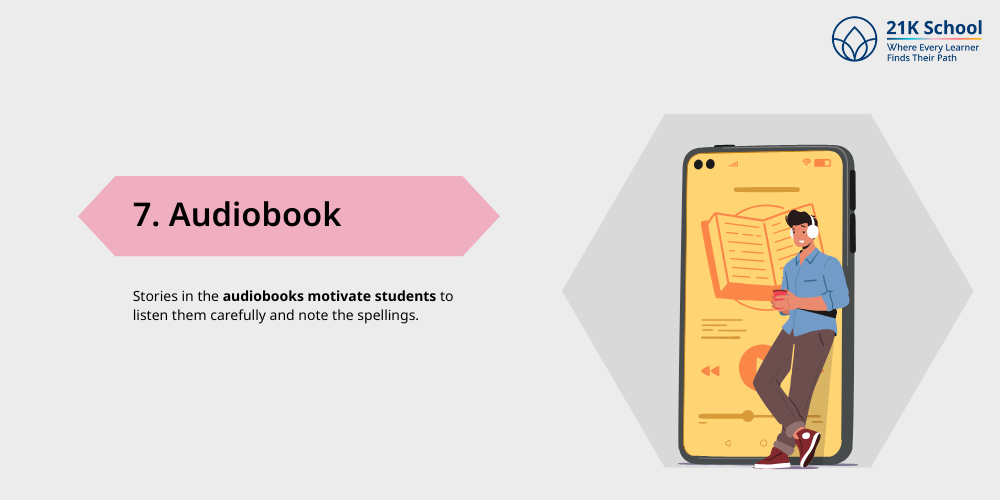
Audiobooks are great powerful tools for slow learners. Stories in the audiobooks motivate students to listen them carefully and note the spellings.
Such techniques are praised by learners as they are fun and engaging for their learning. These audiobooks are also available in online or as CDs.
8. Practical Work
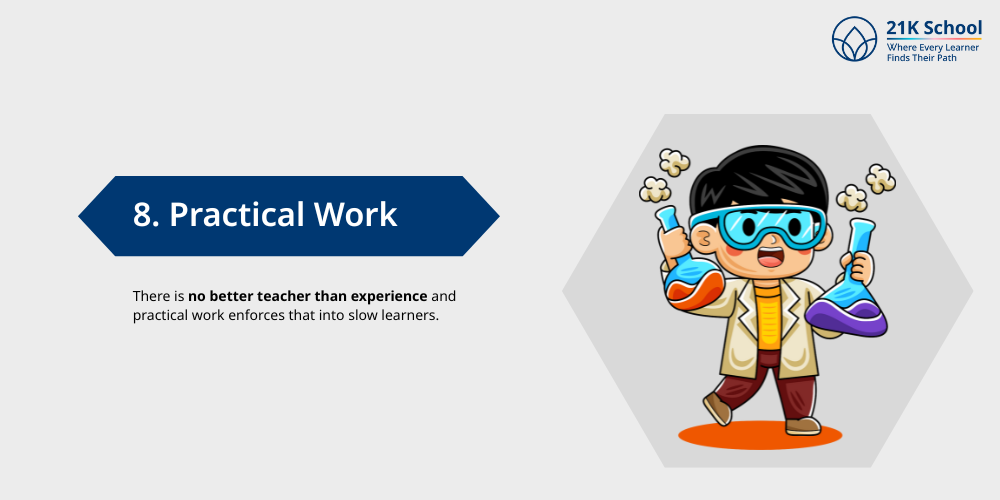
There is no better teacher than experience and practical work enforces that into slow learners. Practical work can be seen to encourage individuality and creative capacities of learners in the field or outside of it.
The science projects, practical files submission, chemical and physical experiments are all examples of incorporation of practical education into traditional schooling systems.
Those who don’t understand this are still stuck in the older patterns of learning without enjoying the best benefits of practical learning.
9. Remedial education
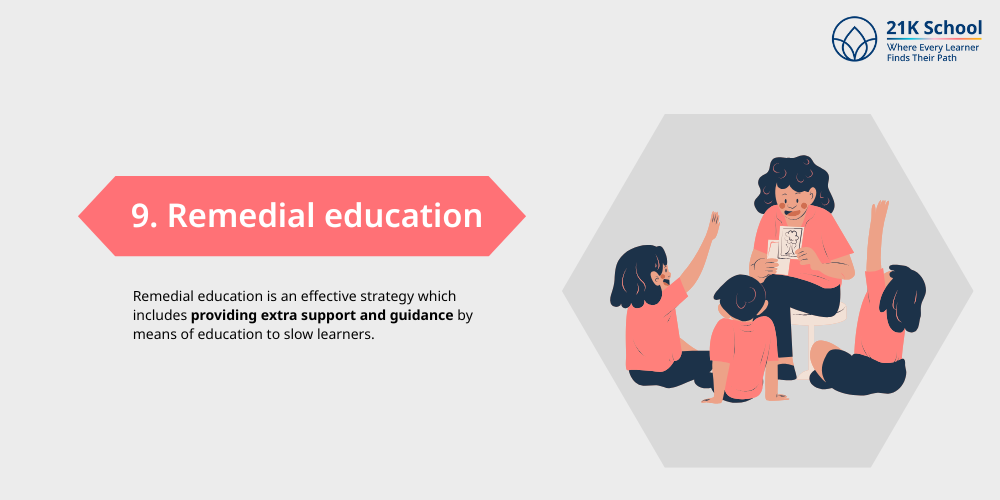
Remedial education is an effective strategy which includes providing extra support and guidance by means of education to slow learners. With remedial education slow learners are better able to ask questions or clear their doubts, in one-to-one education. Slow learners always find it difficult to ask questions in a normal classroom environment.
With the help of remedial education, teachers can easily understand their weaknesses and strengths along with providing benefits of personalised education .
10. Hands-on Activities
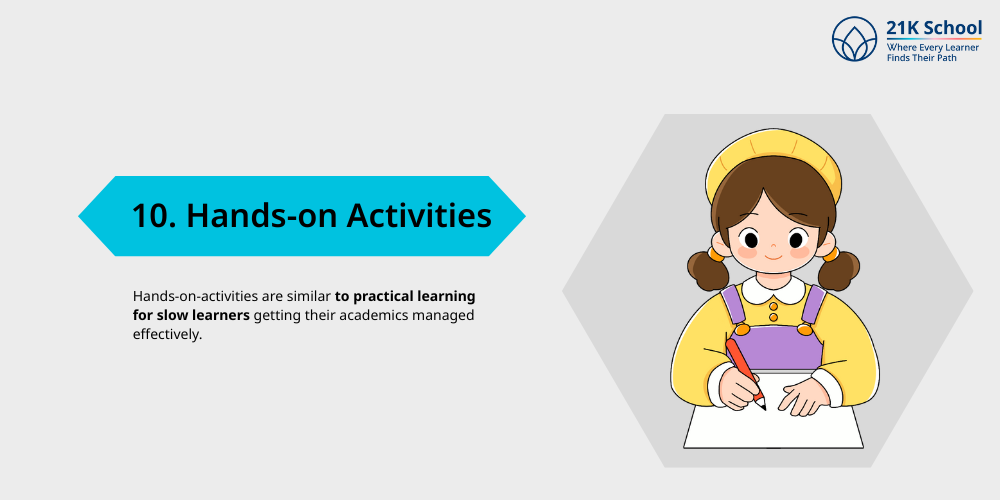
Hands-on-activities are similar to practical learning for slow learners getting their academics managed effectively. It is well-known that whatever we touch or practice stays in our minds more reluctantly.
Same applies for slow learners, thus encouraging them to get real and hands-on exposure for leveraging many benefits of learning.
These activities for slow learners might include games like riddles.
Read more on how gaming well: links between video games and flourishing mental health
11. Group Discussion and Debates
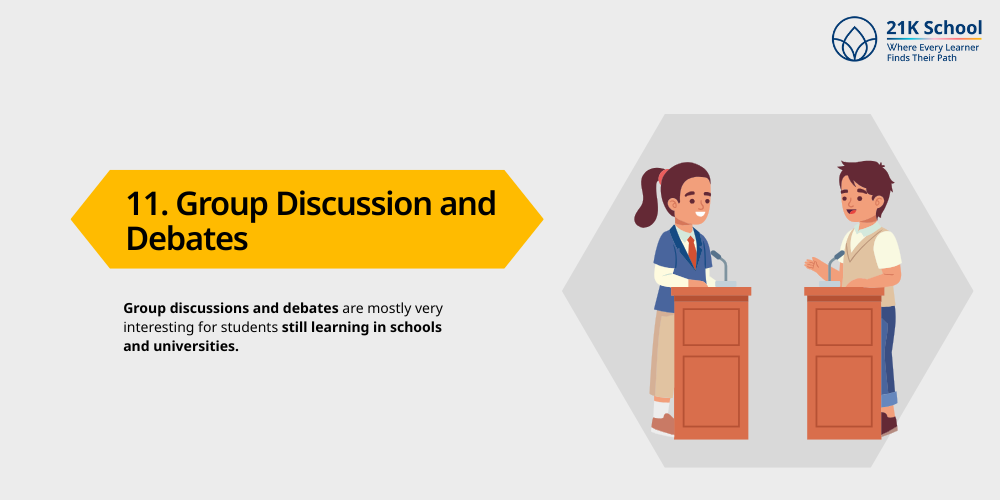
Group discussions and debates are mostly very interesting for students still learning in schools and universities. Slow learners can get their space through these discussions to express themselves and find knowledgeable relevance.
Such activities are great for slow learners trying to learn collaboration and teamwork as well.
You might find it easy to fit in a group once you practice how to present yourself in such discussions,while also developing your critical thinking skills
Conclusion
Slow learners are unable to comprehend information as fast as their peers. Indulging slow learners in various types of fun learning activities allows them to enhance their learning capacity and increases slow learners’ memory capacity.
Educators can employ a wide range of activities meeting the needs of every student by creating an encouraging activity based positive learning environment . By implementing hands-on experiences, multisensory learning, matching games and peer tutoring, children will be better able to develop cognitive abilities.
Truly helpful are these engaging exercises for slow students to develop collaboration skills and develop a sense of fulfilment.

